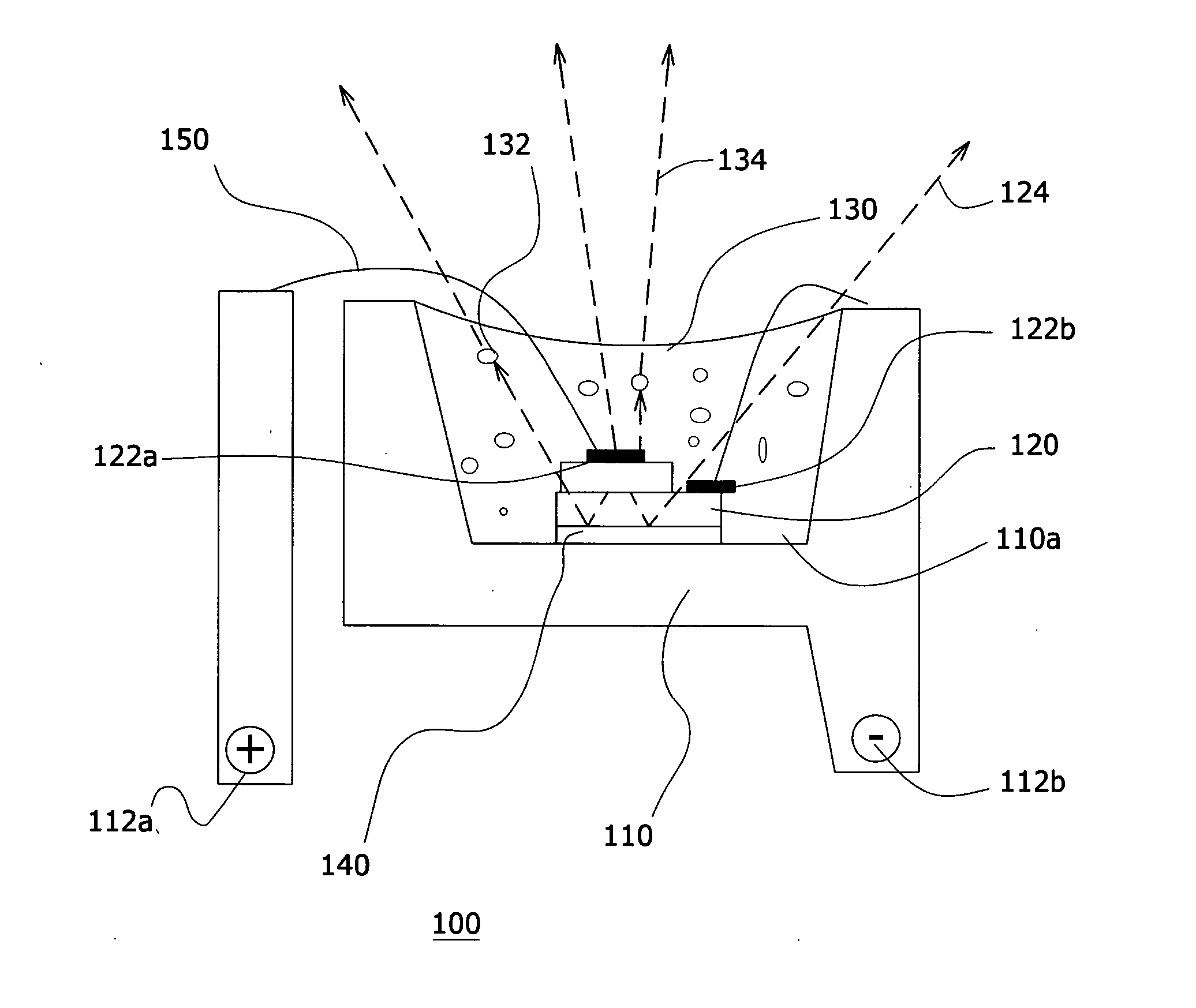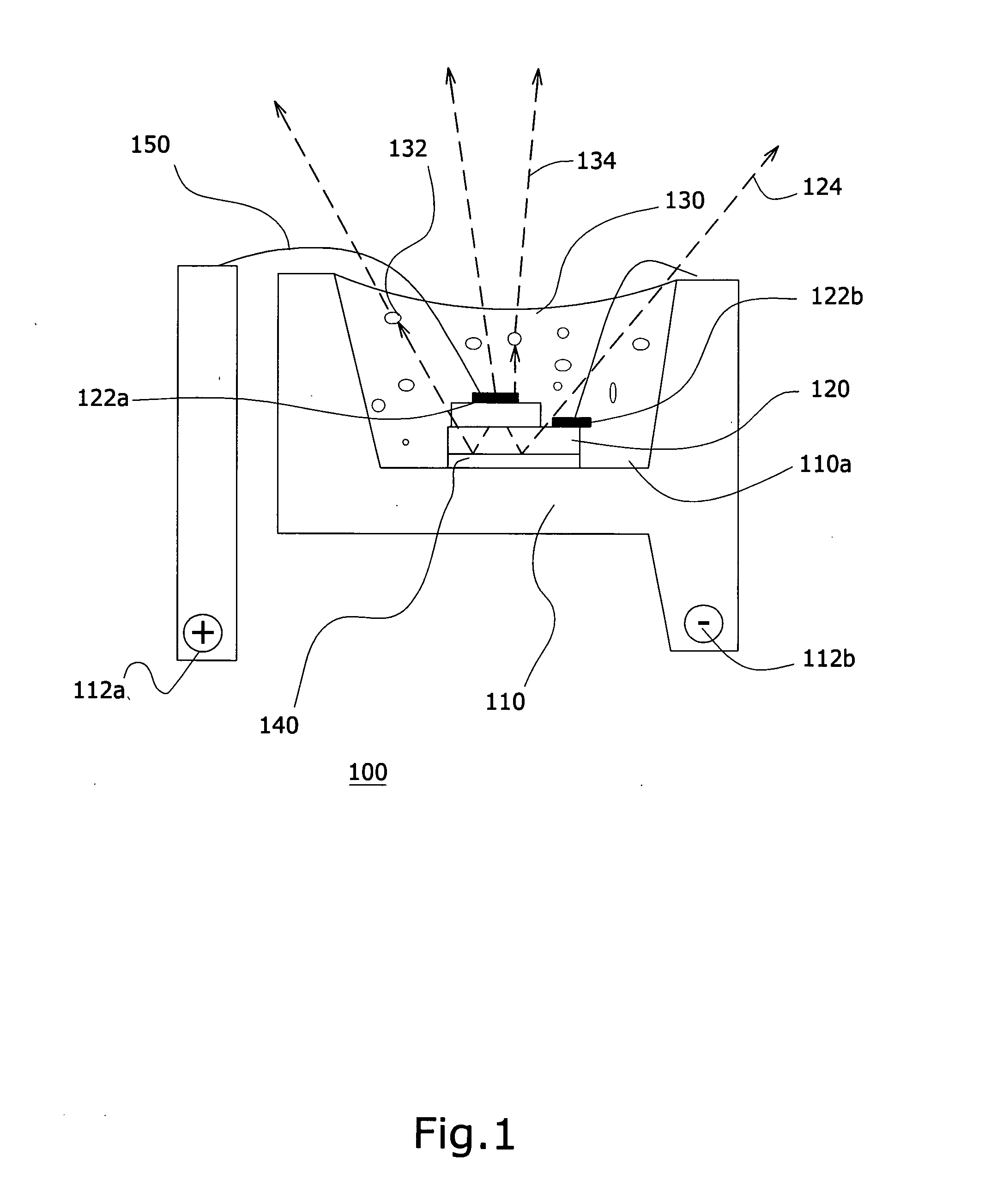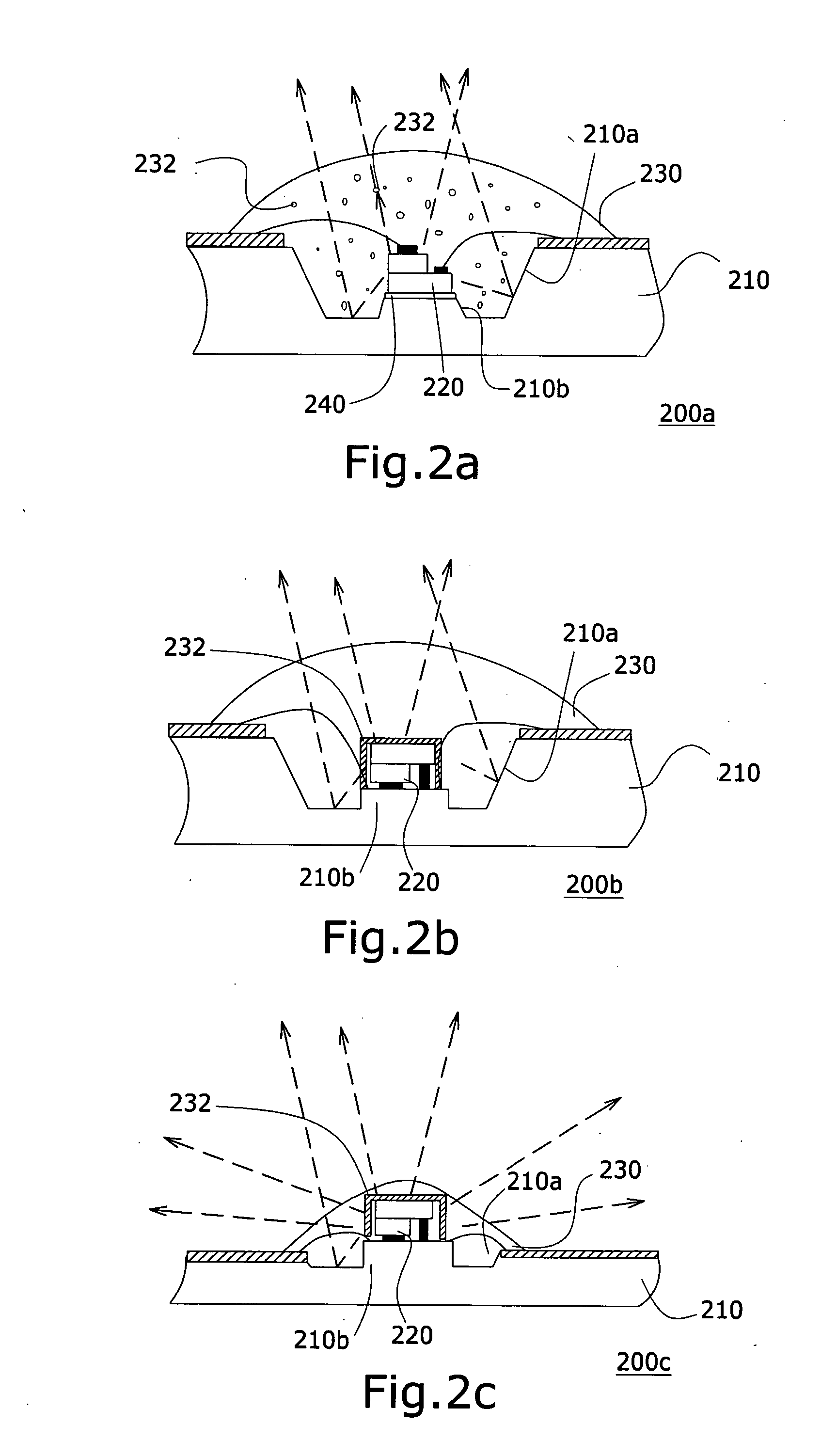White LED
- Summary
- Abstract
- Description
- Claims
- Application Information
AI Technical Summary
Benefits of technology
Problems solved by technology
Method used
Image
Examples
application example 1 (
GREEN FLUORESCENT POWDER)
[0037] 1. Take 5.0 g CaCO3, 1.83 g SiO2, 0.5860 g Eu2O3, 0.4141 g Dy2O3 and 1.1185 g MgO, grind and mix them evenly, then add proper HCl and form Ca7.8Mg(SiO4)4Cl2:Eu0.12Dy0.08.
[0038] 2. Place the mixed material into a crucible and bake in open air at 5° C. / min rising rate up to 1200° C. for calcinations. 6 hours later lower the temperature at 5° C. / min rate cool down to room temperature.
[0039] 3. Grind the calcinations powder and place them into a crucible sintering in open air at 1200° C. for 5 hours, the temperature rising rate is still 5° C. / min.
[0040] 4. Grind the sintering powder and place them in H2 / N2 (15% / 85%) gas at 1000° C. for reduction for 6 hours to change Eu3+ ions into Eu2+ for brighter effect, however this is not a necessary process.
Following are the examples of this process:
[0041]FIG. 4: The excitation spectrogram and emission spectrogram of Ca7.8Mg(SiO4)4Cl2:Eu0.12Dy0.08.
[0042]FIG. 5: The XRD spectrogram of the powder with Ca7.8Mg(...
application example 2 (
[0044] 1. Take 5.0 g SrCO3, 0.9970 g CaCO3, 3.29 g SiO2, 1.0515 g Eu2O3, 1.145 g Mn2O3 and 2.007 g MgO, then grind and mix them evenly; add proper amount of HCl and turn them into (Sr7.48Ca0.2)Mg(SiO4)4Cl2:Eu0.12Mn0.2.
[0045] 2. Place the mixed material into a crucible and bake in Helium gas at 5° C. / min rising rate up to 1250° C. for calcinations. 6 hours later lower the temperature at 5° C. / min rate cool down to room temperature.
[0046] 3. Grind the calcinations powder and place them into a crucible sintering in open air at 1250° C. for 5 hours, the temperature rising rate is still 5° C. / min.
[0047] 4. Grind the sintering powder and place them in H2 / N2 (15% / 85%) gas at 1000° C. for reduction for 6 hours to change Eu3+ ions into Eu2+ for brighter effect, however this is not a necessary process.
Following are the examples of this process:
[0048]FIG. 7: The excitation spectrogram and emission spectrogram of (Sr7.48Ca0.2)Mg(SiO4)4Cl2:Eu0.12Mn0.2.
[0049]FIG....
application example 3 (
RED FLUORESCENT POWDER)
[0051] 1. Take 0.8059 g of CaCO3, 5.0 g SrCO3, 3.6945 g Na2S, 1.6668 g Eu2O3 and 0.3812 g Sm2O3, grind and mix all together evenly, the compound becomes (Sr0.78Ca0.17)S:Eu0.1Sm0.015.
[0052] 2. Place the mixed material into a crucible and bake to 1100° C. for calcinations and reduction in H2 / N2 (15% / 85%) gas. 6 hours later lower the temperature at 5° C. / min rate cool down to room temperature.
[0053] 3. Grind the sintering powder and place them in H2 / N2 (15% / 85%) gas at 1100° C. for reduction for 6 hours to change Eu3+ ions into Eu2+ for brighter effect, however this is not a necessary process.
[0054] 4. The production of red fluorescent powder applies Na2S process, with addition of Sm for better luminant efficiency and heat-resistance.
[0055]FIG. 10: The excitation spectrogram and emission spectrogram (Sr0.78Ca0.17)S:Eu0.1Sm0.015.
[0056]FIG. 11: The XRD spectrogram (Sr0.78Ca0.17)S:Eu0.1Sm0.015 of red fluorescent material with addition of Europium and Samarium. ...
PUM
 Login to View More
Login to View More Abstract
Description
Claims
Application Information
 Login to View More
Login to View More - R&D
- Intellectual Property
- Life Sciences
- Materials
- Tech Scout
- Unparalleled Data Quality
- Higher Quality Content
- 60% Fewer Hallucinations
Browse by: Latest US Patents, China's latest patents, Technical Efficacy Thesaurus, Application Domain, Technology Topic, Popular Technical Reports.
© 2025 PatSnap. All rights reserved.Legal|Privacy policy|Modern Slavery Act Transparency Statement|Sitemap|About US| Contact US: help@patsnap.com



